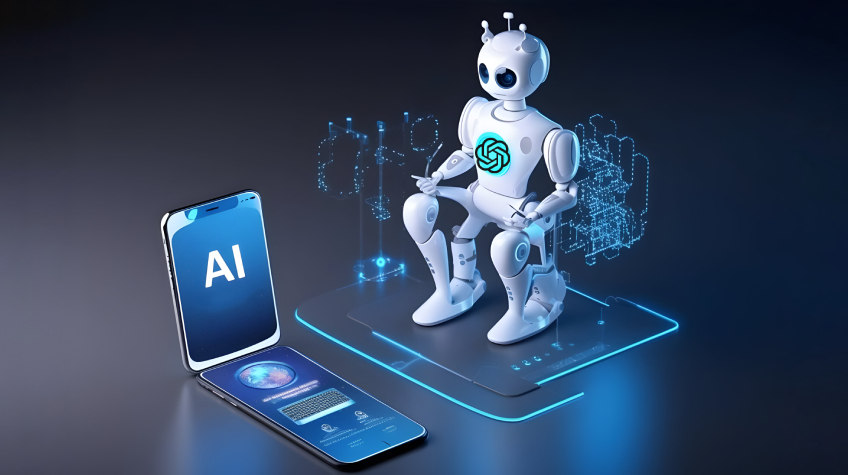Top Trends Shaping the Future of ChatGPT App Development
Discover the top trends driving the future of ChatGPT app development, from advanced AI features to real-time integrations and industry-specific use cases.
The world of artificial intelligence is evolving rapidly, and at the forefront of this revolution is ChatGPT—OpenAI’s conversational AI that has redefined how users interact with machines. As more developers integrate ChatGPT into apps for diverse sectors like education, healthcare, finance, and customer service, it's crucial to stay ahead of the curve.

In this blog, we’ll explore the top trends that are shaping the future of ChatGPT app development and how developers, businesses, and tech enthusiasts can prepare for what’s next.
1. Multimodal Capabilities Are Becoming the Norm
ChatGPT is no longer limited to just text. With the introduction of multimodal models, ChatGPT can now understand and generate not only written responses but also images, audio, and even video. This opens up a whole new dimension of interaction possibilities.
What this means for developers: Future ChatGPT-powered apps will offer more immersive experiences—like interpreting images, generating visual content, or responding to voice inputs in real-time. App developers must consider integrating APIs and interfaces that support voice-to-text, image processing, and visual output.
2. Personalized AI Experiences Through Memory
One of the most talked-about features is ChatGPT’s ability to “remember” user preferences and past interactions (with user consent). This makes it capable of offering highly personalized responses, remembering context, and tailoring conversations for individual users.
What this means for developers: Apps will increasingly need to handle persistent user profiles, dynamic memory states, and context tracking. Developers should think about how to build consent-driven memory systems and manage user data responsibly.
3. Real-Time Collaboration and Multi-Agent Systems
We’re entering an era where users don’t just chat with one AI—they collaborate with multiple agents that specialize in different domains. For example, one agent may help with scheduling, another with content creation, and another with coding—all in the same app.
What this means for developers: Designing an app that can orchestrate multi-agent conversations while keeping them coherent and productive is both a challenge and an opportunity. APIs and backend logic must be optimized for agent communication and user context sharing.
4. Enterprise Integration and Automation
Businesses are increasingly adopting ChatGPT to automate tasks, enhance workflows, and support customer engagement. From CRM integrations to automated document generation, the enterprise use cases are exploding.
What this means for developers: ChatGPT apps will need deeper integration with enterprise software ecosystems—think Salesforce, Slack, Microsoft 365, and custom APIs. Security, compliance, and scalability become essential concerns in this space.
5. Ethical AI and Trust by Design
As ChatGPT becomes more powerful, ethical concerns are growing. Developers and organizations are expected to prioritize transparency, data privacy, and bias mitigation.
What this means for developers: You’ll need to build apps with user consent, transparency, and fairness in mind. Expect to implement tools that monitor for hallucinations, offensive content, and misuse while maintaining transparency about AI limitations.
6. Low-Code and No-Code Integrations
With ChatGPT increasingly being offered through easy-to-use platforms, even non-developers can create AI-powered applications. Low-code/no-code tools are democratizing AI development.
What this means for developers: While technical expertise remains vital for complex systems, developers should consider creating plug-ins, templates, or integrations compatible with low-code platforms to reach broader audiences.
7. Offline and Edge Capabilities
The demand for privacy and low-latency performance is pushing development toward edge AI. Lightweight, locally deployed models that don’t require constant internet access are gaining attention.
What this means for developers: Developers will need to evaluate trade-offs between cloud-based and edge deployments. Creating hybrid models where sensitive tasks are handled locally while tapping into ChatGPT’s power when needed could become a new standard.
8. Advanced Tool Integration with AI Agents
ChatGPT now supports tool use—enabling it to interact with calculators, code interpreters, file upload systems, and more. Future apps will be designed around these agent-based workflows.
What this means for developers: Your apps can go beyond conversation. Think of AI that can read a spreadsheet, analyze its data, generate a chart, and summarize insights—all in a single flow. Designing intuitive tool-use interfaces is critical.
9. Globalization and Multilingual Fluency
With increasing accuracy in multiple languages, ChatGPT is more capable than ever of powering global applications. Whether it’s real-time translation or culturally adapted content, the possibilities are expanding.
What this means for developers: Multilingual support should be a default consideration, especially for apps targeting diverse markets. Localization frameworks and culturally aware AI interactions will be essential components.
10. Continuous Learning and Fine-Tuning
Fine-tuning large models and incorporating custom data to adapt AI for niche use cases is on the rise. As OpenAI and others offer better ways to customize models, developers can make ChatGPT truly domain-specific.
What this means for developers: Whether you're in law, medicine, or retail, you can now fine-tune ChatGPT on your own data. This requires understanding prompt engineering, data labeling, and evaluation techniques to ensure quality.
Conclusion
ChatGPT App Development is more than just a chatbot—it’s the foundation of the next generation of intelligent, interactive, and personalized applications. Developers who embrace these trends will be at the forefront of a massive shift in how humans interact with technology.
Staying informed, experimenting with new tools, and designing with ethics in mind will be key to building successful and sustainable ChatGPT-powered apps in the years to come.